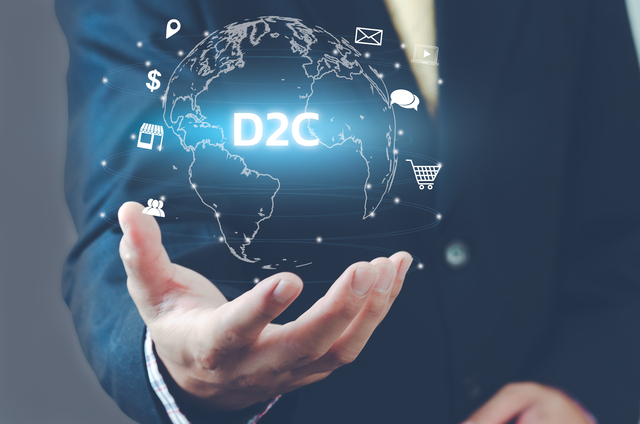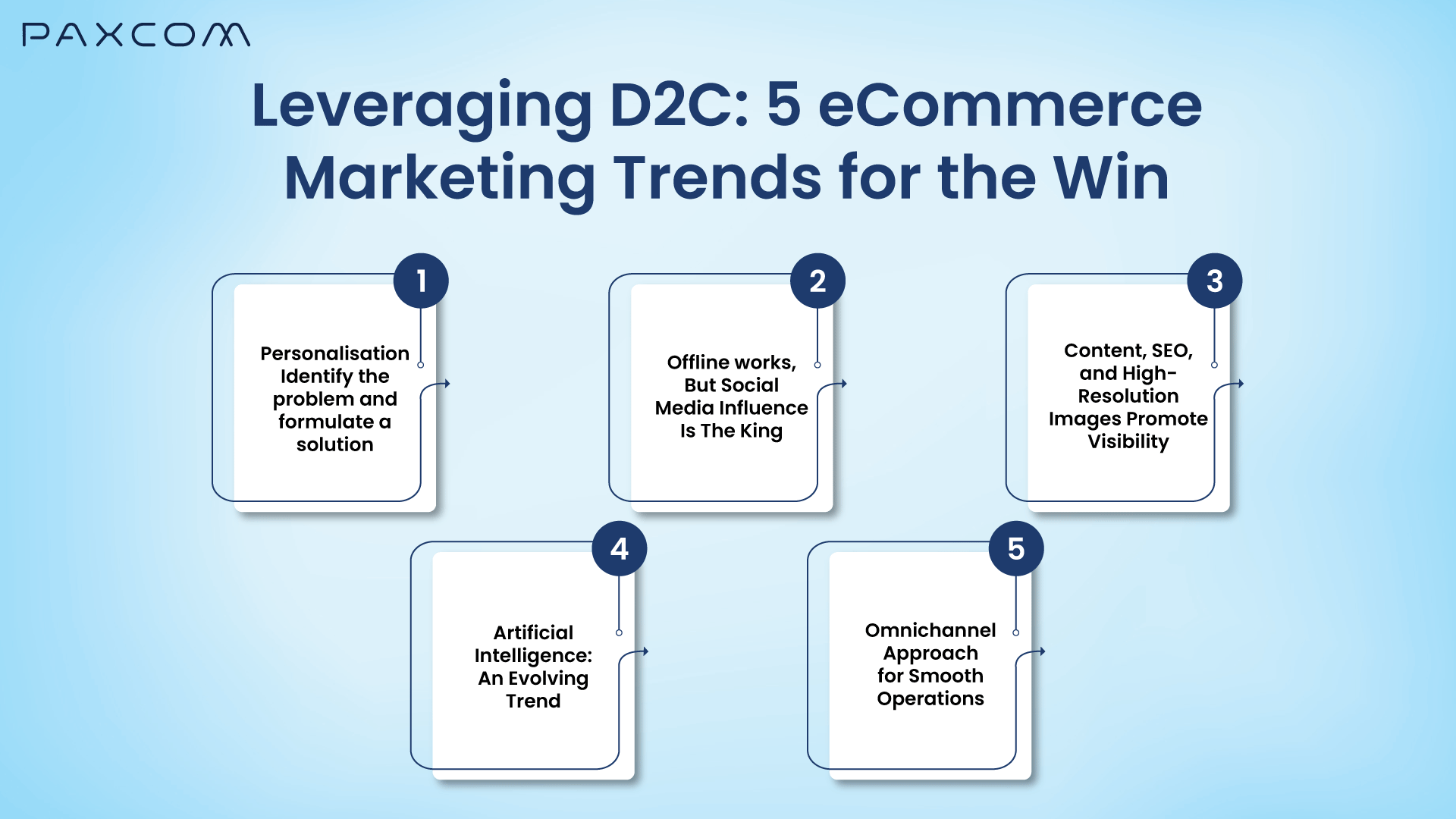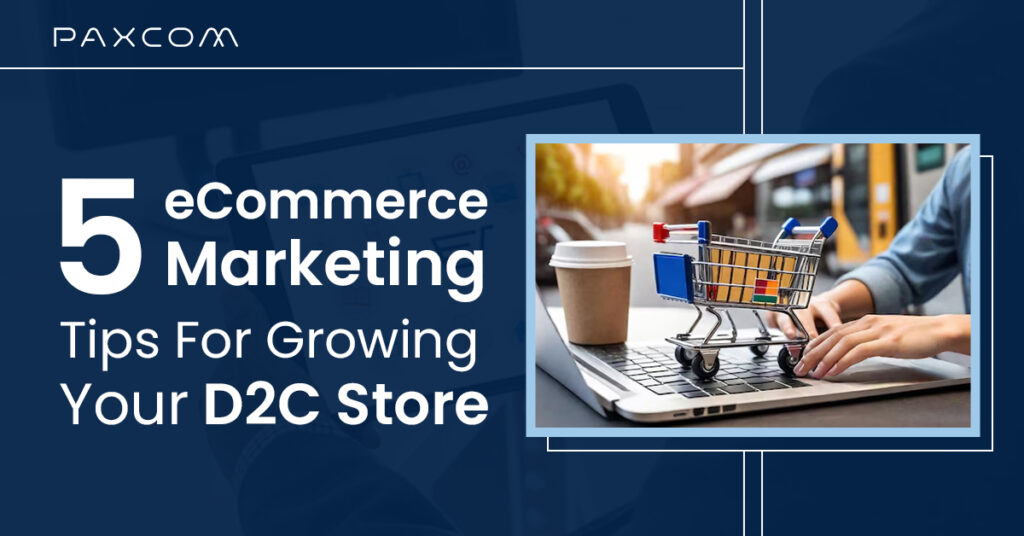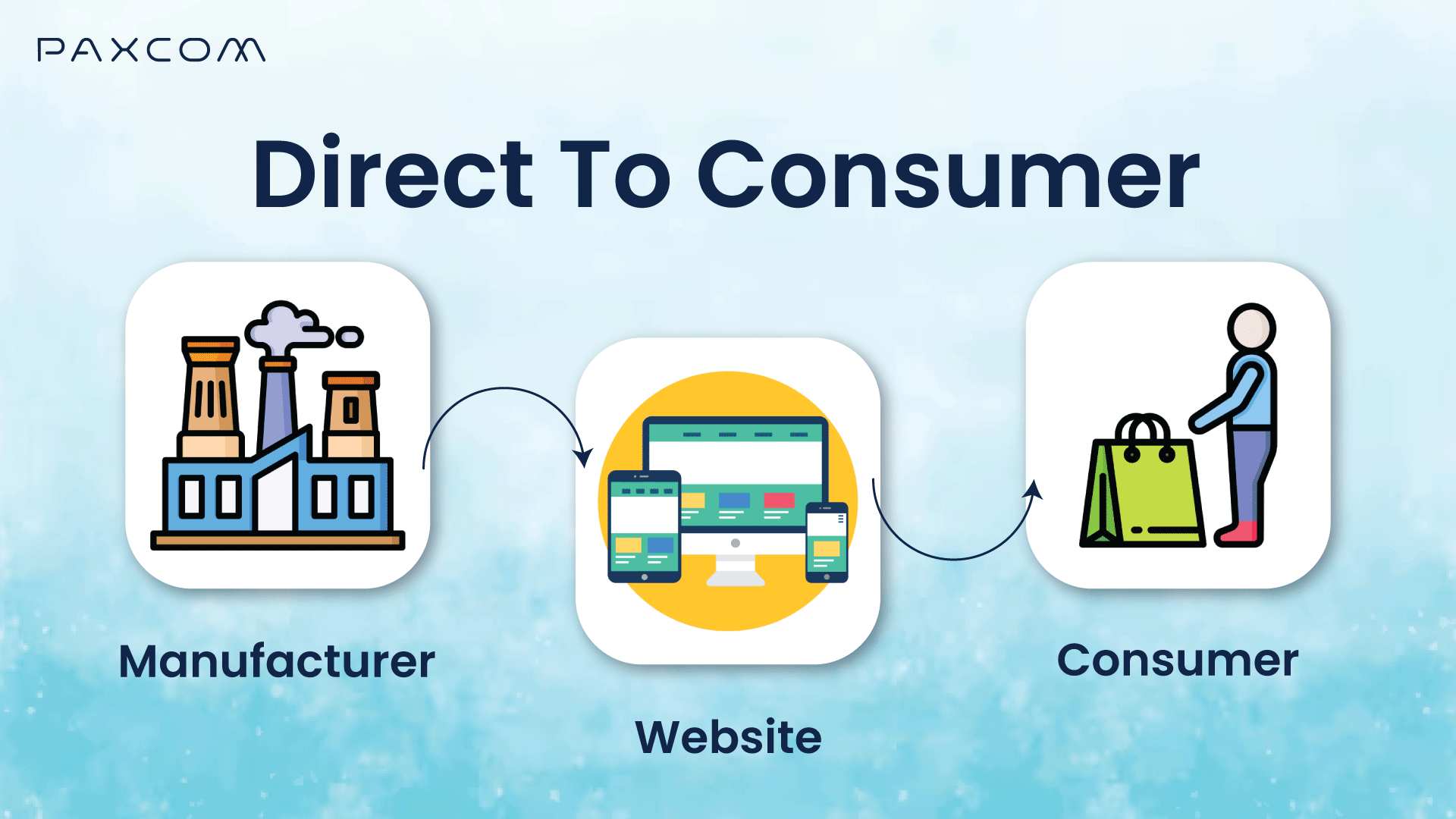The D2C industry has experienced a global surge in sales in the past few years, and one thing is for sure: it is growing beyond its limits. With online shopping becoming more popular and a more common way to get hands on almost everything, it becomes imperative for the brand to adapt to the trends and advance itself accordingly to make the best of it both on the sales and customer front.
The D2C model, which stands as an alluring alternative to B2B and B2C modes of business, gives the brand autonomy to handle the business on its own. The D2C model eliminates intermediaries, resulting in direct communication with customers and better addressing pain points.
From manufacturing to shipping to exchanges and reviews, the brands take complete ownership without any third-party involvement. Either the website sells the products online, or several eCommerce platforms list them under the appropriate categories.
CConsumers are becoming more digitally literate, choosing to shop online or offline (if possible) at their own convenience. Nike, Open Sea, Sugar, Mama Earth, and Fitbit are a few examples of the leading D2C brands in their respective categories. Additionally, Amazon has a number of D2C brands listed on the platform, and the brands themselves handle the fulfilment. In a recent report, eMarketer identified that there has been a tremendous increase in website traffic compared to the last few years. These factors clearly indicate the success and penetration of D2C companies in the eCommerce market over time.
D2C practices typically occur across eCommerce channels, such as websites, apps, and direct sales over the phone. This retail model is more complimentary than the traditional one, as it gives the retailer an opportunity to have a better understanding of their customers.
Table of Contents
Advantages of D2C eCommerce
D2C eCommerce creates a win-win situation for the brand across all dynamics. Over time, the brand undergoes appropriate nurturing, from building a community from scratch to providing outstanding customer service. Not only does the brand come across limitless opportunities, but it also gains more credibility and accountability in the hybrid marketplace.
- Market beyond limits
The D2C model goes beyond the traditional wholesale strategy, allowing the brand to tap new markets without physical limitations, such as local retailers. The online process facilitates the brand’s growth across various dimensions.

D2C business allows the brand to tap new markets and achieve exponential growth
- Exponential growth
Do you know that in the USA, over 75% of people have transitioned their shopping habits from offline to online? Consumer expectations have reached new heights, and they prefer the online-first approach before making a final decision. Consumers desire personalisation, and D2C brands strive to provide customers with the utmost convenience, which makes them stand out the most and results in skyrocketing sales and growth. Nike is one of the most prominent examples. In 2020, the brand’s D2C sales accounted for 35% of total sales, and they are expected to reach 60% by 2025.
Growth of the D2C Industry over the years
D2C brands are technically advanced and follow an omnipresent approach; they are primarily present online with the aim of creating one-of-a-kind experiences for their consumers. Some brands do have brick-and-mortar stores for the best customer experience and engagement. These stores prioritise creating an unforgettable, value-added experience for their customers. To build communities and retain long-term customers, many brands utilise discounts, loyalty programmes, reviews, and user-generated content.

When considering the overall penetration in the global landscape, the D2C industry has demonstrated significant growth, and there appear to be no signs of slowing down in the near future. Listed below are some significant statistics about D2C trends that can assist your brand in tailoring its expansion strategy.
- The global D2C market is expected to attain a total valuation of $60 billion by 2027.
- India is projected to account for 10% of the global D2C market by 2025–26. (statista)
- Along with more than 600 direct-to-consumer brands, the Indian D2C market will be worth more than $66 billion in 2023. (Statista)
- An Inc42 study estimates that the direct-to-consumer market will reach a potential value of $300 billion in 2030, after expanding at a CAGR of 24% from 2021 to 2030.
To succeed in this retail model, you must thoroughly research and invest in its strategies and capabilities. It is critical to nurture the brand carefully, whether it be through recognition or nurturing connections and customer relationships, both existing and new.
Pro-Tip: Understanding and addressing the pain points of your customers is crucial for success in business. The emphasis is not simply on providing a solution but on delivering the absolute best solution to valued consumers.
Leveraging D2C: 5 eCommerce Marketing Trends for the Win

5 D2C eCommerce Marketing Trends
Here are a few eCommerce marketing tips that will help you enter the D2C market and capitalise on the developments.
- Personalisation: Identify the problem and formulate a solution.
Dive into the D2C business by talking about the problems with traditional shopping and giving the audience a solution. Mention how you are going to resolve the problem and what sets you apart from your competitors. A thriving D2C brand is all about the personal touch and the long-lost connection through which one can express themselves.
For this narrative to take place, market research becomes an essential part of finding the niche and the solution. Now you have a targeted audience, and the next segment revolves around researching the obstacles often faced by customers. Make a list of the pain points as well as the best solution you can offer to solve the problem. You will get clarity on how your marketing campaigns will drive traffic and results.
Based on these factors, you can formulate a plan for social media marketing and enhance brand value by maintaining the brand’s identity and cultivating relationships with customers. Running a D2C store comes with several challenges, as you are on your own and have the responsibility to carry out all the tasks.
Pro Tip: Storytelling is important because it leaves a great impact on the customer’s mind and makes everything look relatable. Having excellent storytelling skills is an absolute must.
- Offline works, But Social Media Influence Is The King.
Social media platforms are the largest elevators for D2C brands. People view Facebook, Instagram, TikTok, Pinterest, and Youtube as hubs for reviews, recommendations, and product reach due to their significant influence.
You can reach a wider audience through these channels. Influencer collaborations enhance brand awareness and identity while providing an expansive audience reach. These parameters leverage the brand at every step and also aid in building long-term, good relationships. The collaborations are either barter-based or monetary, but at the same time, they are budget-friendly and save a lot of time and money.
Reviews by influencers leave a great impression on viewers’ minds, and the chances of conversion increase. Good reviews and an easy return or exchange policy can sometimes persuade customers to try a product. Sugar Cosmetics is one of the most successful direct-to-consumer (D2C) brands that used influencer marketing to grow into a multimillion-dollar brand in the beauty industry.
- Content, SEO, and High-Resolution Images Promote Visibility.
An important eCommerce marketing tip that every brand should implement in their strategy is search engine optimisation (SEO). Whether you are just starting out or have a growing company, a strong SEO strategy is an intriguing way to generate traffic and gain recognition. Investing in adwords helps with a larger share and higher ranking in search engines and social media channels.

Source: Nike
Precise titles, powerful descriptions, and product features backed by high-resolution images add value to the product’s overall look and feel. Meanwhile, value-adding content and powerful infographics can help the content penetrate better into the viewers’ minds when it comes to marketing the brand. Viral video marketing, one of the fastest-growing trends, has created hype in the market.
- Artificial Intelligence: An Evolving Trend

Incorporate AR for an enhanced shopping experience.
AI, AI, and AI. Its emergence has undoubtedly made life easier and more efficient. Both predictive AI and generative AI offer numerous benefits to brands. The brands also reap both qualitative and quantitative benefits from AI’s incorporation into their businesses. Generative AI streamlines tasks and aids in brand growth by composing ad copy, titles, and even codes according to search engine prompts, utilising available datasets. On the other hand, predictive AI makes sure you are always a step ahead with inventory optimisation, forecast trend analysis, and consumer shopping patterns and behaviours.
- Omnichannel Approach for Smooth Operations
Our final eCommerce marketing tip focuses more on the brand. When the D2C business expands both offline and online across various social and eCommerce channels, having customer data organised in one place becomes a necessity. We strongly suggest that the brands go for an omnichannel approach to save you from last-minute stress. Omnichannel not only provides a centralised approach to reaching the target audience across all marketing channels, but the brand also has authority over the pricing and promotions of the product.
Omnichannel benefits the brand by optimising and boosting engagement, with better pricing and ROI. The growing influence of social media influencers has already had an impact on the entire customer journey in semi-urban areas. This helps the omnichannel shopping experience grow and become more popular. Omnichannel is quickly becoming a popular place for direct-to-consumer fashion brands that want to offer easy-to-use touchpoints and focus on the customer.
Conclusion
Starting a business is easy, but making it grow from its roots is where the real challenges lie. As a newcomer to the industry, you may overlook certain trends and strategies amidst the many tests and trials.
At Paxcom, we have a team of highly knowledgeable professionals who specialise in strategizing and executing campaigns, as well as experts in AMS, business analysis, and data analysis. Our dedicated team is here to assist your business in achieving remarkable growth.
Discover how Paxcom played a pivotal role in assisting a prominent nutrition brand in expanding their sales prospects across various platforms, significantly reducing their ACOS by 6X, and enhancing their visibility and conversions. Take your brand's growth to new heights by partnering with the industry's top experts and unleashing your business's full potential. For more information, feel free to reach out to us at info@paxcom.net or schedule a demo.















